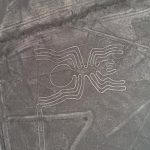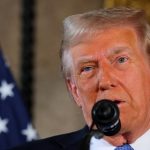The American envoy met with Israeli leaders and senior officials from the Cedar Country in an attempt to ease tensions. The IDF continues bombing the south and approves attack plans. President Biden is concerned about the prospect of a widening conflict. The overflights of the airspace and the disputed farms of Shebaa and the hills of Kfarchouba, unresolved knots in the negotiations between Israel and Lebanon.
Beirut () – “The conflict along the Blue Line between Israel and Hezbollah has been going on for too long […] It is in everyone’s interest to resolve the situation quickly and diplomatically. This is both urgent and feasible, within reach […] It is achievable!” Without mincing words, Amos Hochstein yesterday issued a new “final warning” to Hezbollah during a whirlwind visit to Beirut, in which he held talks first with the army commander, Joseph Aoun, and then with the President of Parliament, Nabih Berry. The US special envoy was then received by the outgoing Prime Minister, Nagib Mikati, and the head of diplomacy of the Country of the Cedars, Abdallah Bou Habib.
Upon his arrival from Israel, where the previous day he had met with Prime Minister Benjamin Netanyahu and President Isaac Herzog, Amos Hochstein stressed that in the last two weeks the risk of the conflict expanding has increased. A prospect that is far from remote and that worries the president of the United States, Joe Biden, to the point of having prompted him to send his top diplomatic representative to the region again.
The American emissary analyzed the situation and presented the progress in the attempt to reach an agreement for a truce in Gaza; He stated at the same time that the battle of Rafah was coming to an end, but that Israel might be tempted to accelerate the winds of war on the northern front, with Lebanon. A far from remote prospect, in case Hamas and Hezbollah do not accept President Biden’s plan, which the extremist movement in the Strip continues to consider “a bargain for suckers.”
At the same time, according to some Western diplomatic sources, the United States would be concerned about Tel Aviv’s “rush” to want to go to war against Hezbollah, although “without a clear strategy, nor having taken into account the consequences of a broader conflict.” “. To date, eight months of violence on the Israeli-Lebanese border have claimed at least 472 victims in Lebanon, most of them Shiite militia fighters, but 91 civilians are added to them, according to an AFP estimate. On the Israeli side, the toll is at least 15 army soldiers and 11 civilians dead, official sources indicate.
For its part, Hezbollah reacted to the new warning by resorting, as it has been doing for months, to the deterrence provided by its military capabilities, which it is gradually revealing to the Israeli army. Yesterday, the “party of God” released a video in which it showed high-resolution aerial images taken by drones of the port of Haifa and military installations in the settlement of Krayot, while demonstrating its offensive capabilities against the Israeli defensive shield. Iron Dome”. Last week he revealed that he owns surface-to-air rockets, which the United States has always refused to supply to the Lebanese army.
According to sources close to the pro-Iran movement, the publication of the aerial views of the port of Haifa is a response to Israeli claims that Hezbollah “has been considerably weakened” by the death of one of its most important commanders: Taleb Sami Abdallah, who died last week in an Israeli attack on a house in the southern Lebanese border town of Jouaiyya.
Also on the war front, Israeli aircraft bombed Khiam again during the night, also hitting the center of the village. Hezbollah announced the death of another fighter, Hassan Saab, originally from Yaroun, while Israeli bombs also rained down on Yaroun, where the IDF (Israeli army) says it has hit a “military ship used as a weapons depot.” Also yesterday, the generals announced the approval of operational plans for an “offensive in Lebanon” after days of escalation along the border, which had already been “approved and validated” in a meeting dedicated to the “assessment of the situation”.
The diplomatic front
On the diplomatic front, French President Emmanuel Macron proposed, on the sidelines of the G7 summit, to work trilaterally with the United States and Israel to contain the situation. Qatar, for its part, is playing an advanced role on the front line [en la mediación con Hamás], at the request of Washington. In this context, an Arab diplomatic source revealed to that the recent visit to Doha by Ali Hassan Khalil, political advisor to the President of Parliament, Nabih Berry, focused on “the situation in the south and the ways to move towards an agreement.” .
According to diplomatic sources, the agreement will prohibit armed drift by allowing residents of the southern territories, including Hezbollah fighters, to remain in their homes without heavy or visible weapons. However, the negotiations do not include the term “withdrawal” of Hezbollah fighters north of the Litani River, but do provide for the withdrawal of heavy weapons and long-range, high-precision missiles.
However, there are two points that remain unresolved and require further discussion. The first concerns Israeli overflights of Lebanese airspace: Beirut demands an end to Israeli violations, which the party refuses. The second point concerns the issue of the disputed Shebaa farms and the Kfarchouba hills, which will be postponed to a later phase in the absence of official recognition by Syria of Lebanese sovereignty over these territorial entities.
Also as part of these negotiations, the Americans are pushing for oil and gas drilling operations to begin in Lebanese waters. Doha’s contribution to the reconstruction of the South, the creation of an economic basket in cooperation with several countries and aid in the electrical energy generation sector are also discussed.












Add Comment